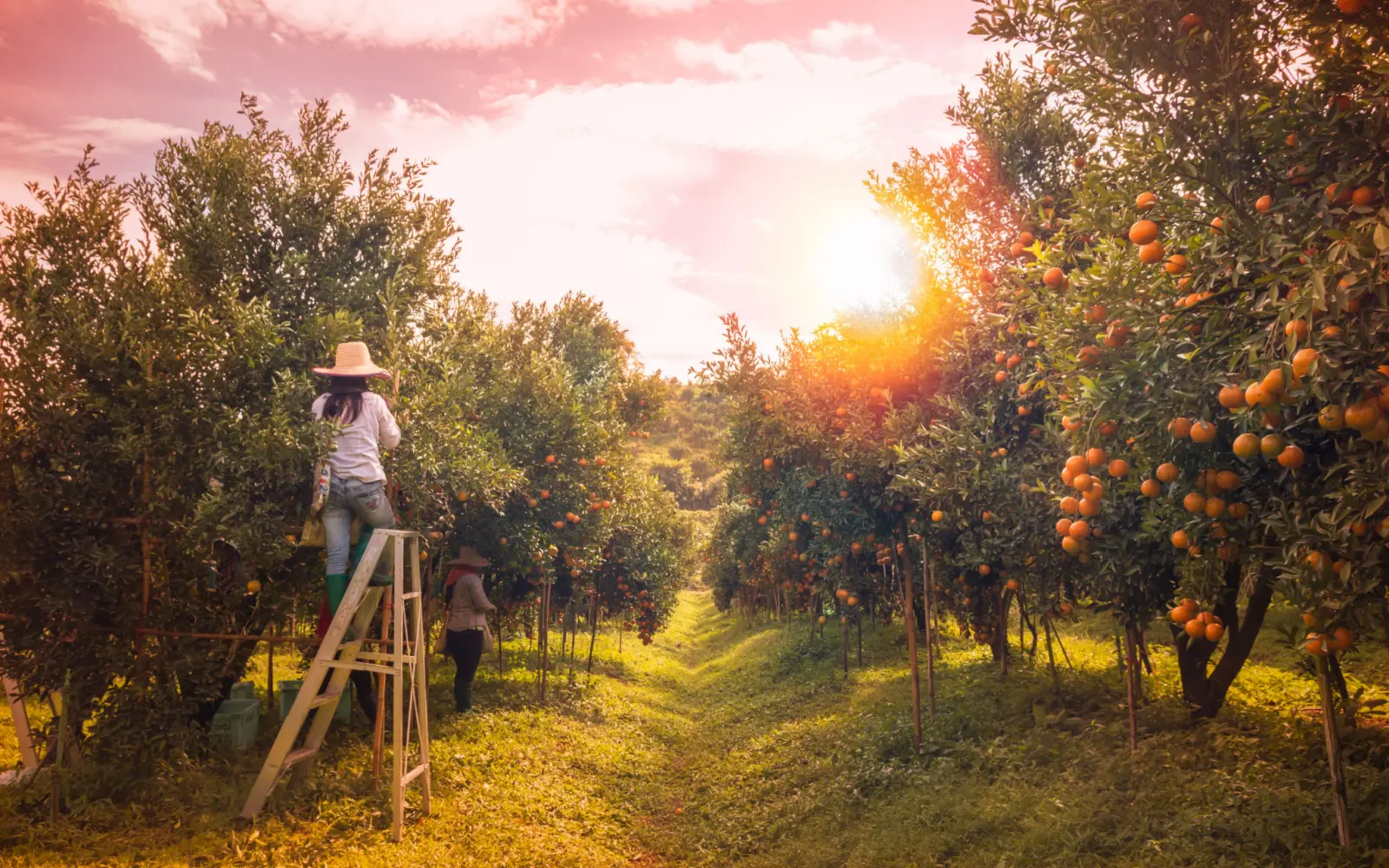The fruit has been a popular food item for thousands of years.
Check out the ten main types of fruit trees in 2024 and why we love each one below.
The 10 Most Popular Fruit Trees in 2024
Here’s a list of the ten most popular fruit trees, starting with apple trees and ending with grapefruit trees.
1. Apple
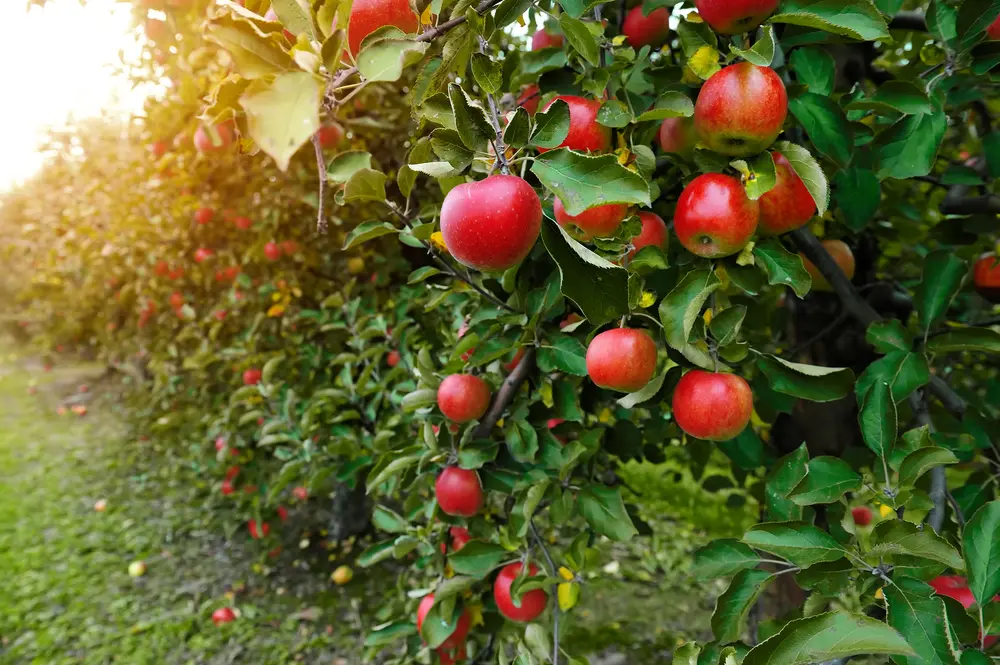
Fotystory/Shutterstock
Apples are one of the world’s most popular fruits. Therefore, apple trees are some of the most popular fruit trees. If you like tart and crisp fruit or sweet and soft fruit, apples have something for everyone!
Varieties like Granny Smith apples are famous for their tart flavor in apple pies during the holiday season. Red delicious apples have soft flesh and are sweeter; they are known as snacking apples.
Apple trees can grow in most climates. They need well-drained soil to grow well. With different varieties, it is crucial to get a variety of apple that is good for the weather and hardiness zone in which you live.
Cold-weather apple varieties like Honeycrisp, McIntosh, Granny Smith, and Gala are great if you live in a northern climate. If you live in the south, consider growing Fuji, Pink Lady, Anna, or Dorsett Golden apples.
Most apples need a second apple tree as a pollinator. Even if you only have a small space to grow your apple trees, it is crucial to have at least two trees so they can pollinate each other. Without pollination, your apple trees won’t be able to produce apples.
2. Pear
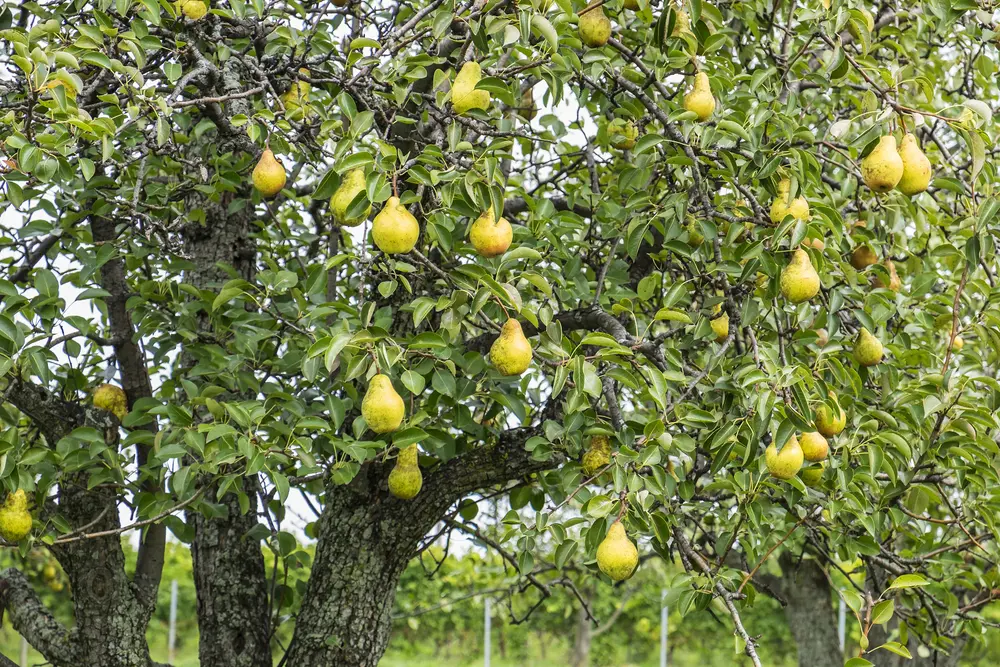
Chiyacat/Shutterstock
Coming in close to an apple tree are the pear trees. These fruit trees are similar to apple trees because of their low maintenance, beautiful blooms, and lots of produce. An advantage of pear trees is that they are hardy, pest- and disease-resistant trees.
Pear trees love cool weather, so they love being planted in the fall, late winter, or early spring. They need well-drained organic matter soil for the best growth.
They are full-sun plants, so find a spot in your backyard or garden that gets at least six hours of sun per day. If you plan to fertilize your pear trees, be aware that too much nitrogen can cause a disease called fire blight in pear trees.
In order for your pear trees to produce, you will have to plant two pear trees. The pear trees will cross-pollinate with each other to produce tasty pears! It is crucial for your pear tree to be well-watered.
During the first year or two after planting your pear tree, water your pear tree weekly to establish strong roots. Once your pear tree starts to flourish, it will require minimal pruning. Prune only diseased or overlapping branches.
3. Peach
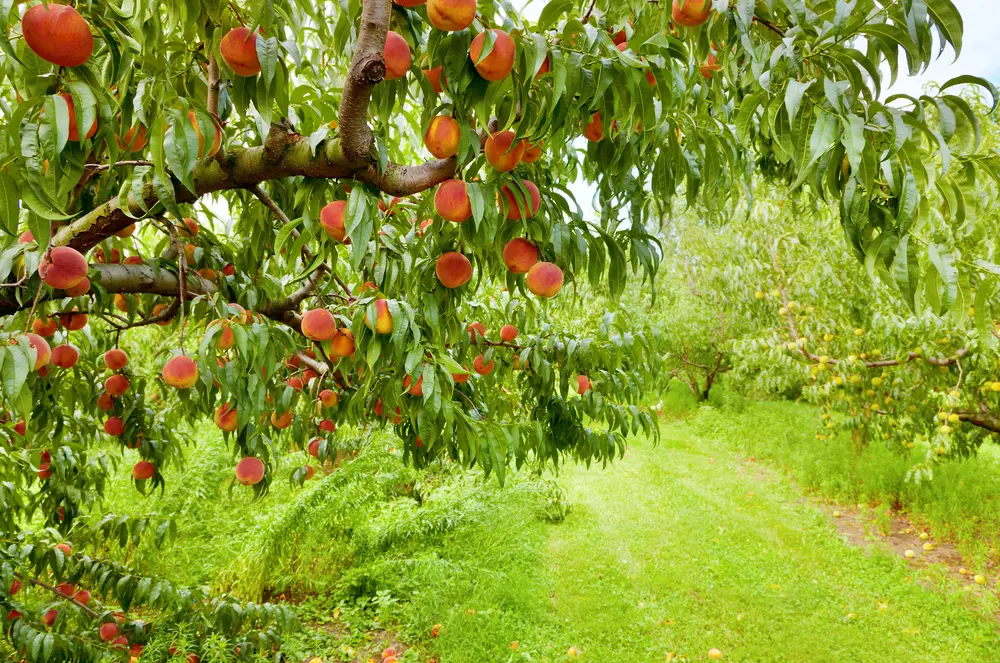
Alexey Stiop/Shutterstock
Peach fruit trees are hardy, but not as hardy as apple and pear trees. They can grow in hardiness zones 4–9, unlike zones 3–9. They produce delicious, soft fruit that everyone is sure to love!
While peach trees can grow in zones 4–9, they flourish in zones 6–8. This climate is perfect for the peaches to produce sweet, ripe fruit. Peach trees do best in areas with full sun all day.
The morning sun is essential because it dries the morning dew off the peaches, keeping them from rotting. Fertile, well-drained soil is ideal for peach trees. Peach trees prefer slightly acidic soil with a pH of 6 to 6.5.
They need to be planted while dormant in late winter or early spring. Unlike apple and pear trees, peach trees can self-fertilize. This self-fertilization means that you do not need a second tree for cross-pollination.
After your trees bloom, wait 4 to 6 weeks before thinning so there is only one bloom every 6 to 8 inches on the branch.
If you do not thin the blooms, the tree will expend too much energy trying to produce so many peaches that each peach will be small and not as sweet.
4. Lemon
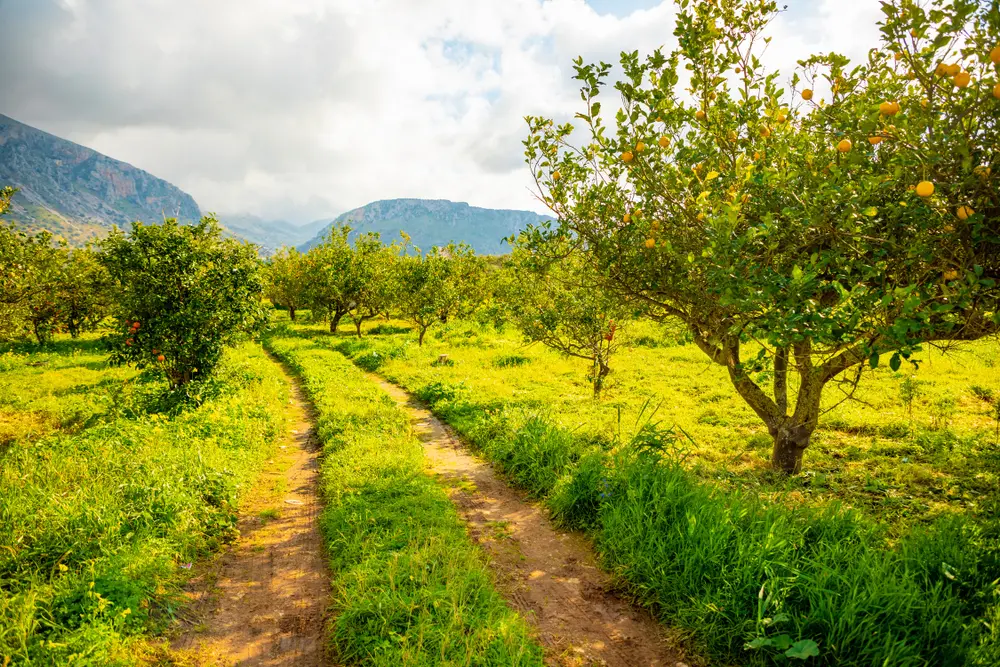
Tatiana Diuvbanova/Shutterstock
Lemons are a favorite summer fruit. Their bright, citrus flavor blends perfectly with a hot day by the pool or beach. Their tartness pairs with sweet sugar to make the best lemonade.
Lemon trees are low-maintenance fruit trees that you can grow indoors if you do not live in a warm climate! Lemon trees require full sun for the best growth and production. If you are growing them indoors in a pot, set them in a south-facing or full-sun window.
Whether you are planting your tree indoors or outside, make sure the soil is well-drained. Lemon trees do not like soggy roots! Plant your lemon trees during the spring, avoiding harsh winter cold or hot summer temperatures until the tree is mature.
If you live in a northern state, do not plant your lemon trees with the risk of a frost in the near future.
After you plant your tree, it is essential to preserve the moisture in the soil. A great way to do this is to spread a two- or three-inch layer of mulch on top of the root area.
5. Fig
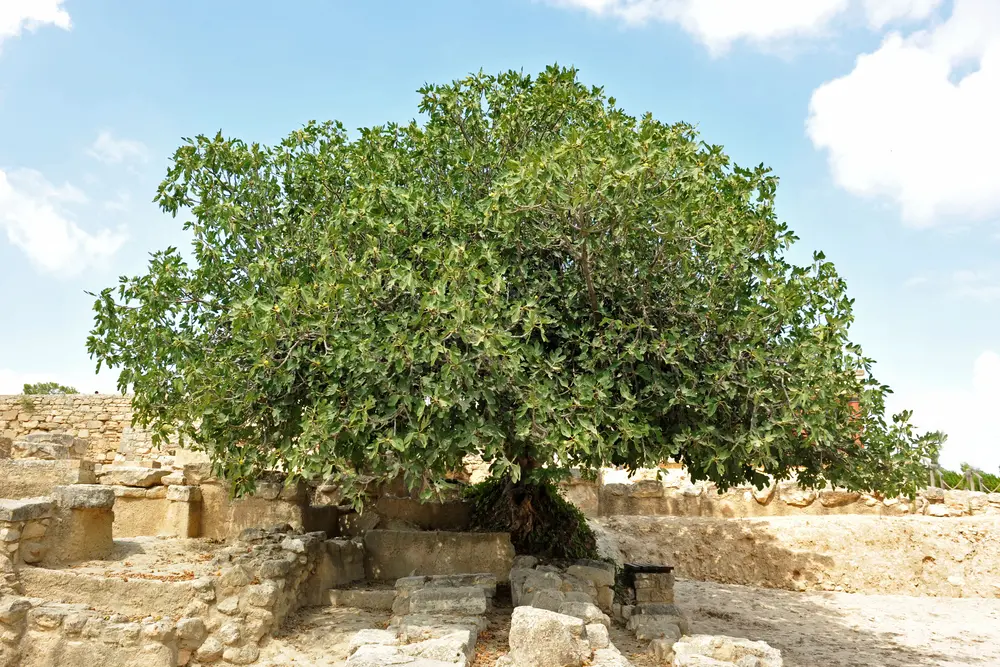
Cynoclub/Shutterstock
Figs are full of fiber and are nature’s candy! These sweet treats can be daunting to grow, but with a little bit of planning, you will have a harvest in no time! You will love their creamy texture and tender flesh.
Fig trees need adequate sunlight. They are native to northern Asia and have a tropical climate with high levels of sun exposure. For fig trees to thrive, they need at least six hours of sunlight per day.
If you live in a cold climate, fig trees can be grown indoors in a container. Get a container that is twice the size of the root ball. This size leaves room for the roots to establish themselves and grow strong. Your container needs to have drainage holes.
If you plant your fig outside, it still needs to have well-drained soil. Fig trees do not like it to be too wet. After your fig trees are planted, give your tree one to one and a half inches of water per week.
6. Orange
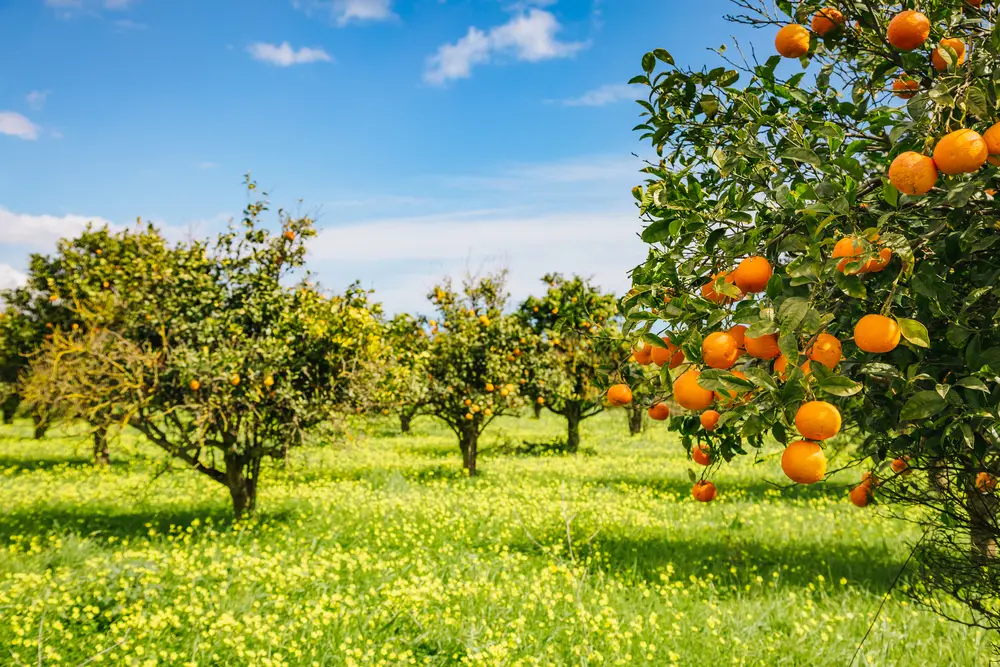
Creative Travel Projects/Shutterstock
Orange trees are the second mascot of summer, coming second to lemons. These citrus fruit trees are some of the most recognizable trees. They have a leafy canopy and fragrant flowers that scream summer.
A full-grown orange tree can reach up to 32 feet tall, so make sure you plant it in an area with adequate space. If you have a small yard, you can buy a dwarf variety of orange trees. The dwarf variety only reaches 12 feet tall.
Oranges thrive in warm climates like those of southern Florida. Oranges are one of Florida’s major food crops. In warm climates such as these, orange trees can be planted at any time of the year.
If they are planted in a cooler climate, they grow best if they are planted in the spring or summer to avoid frost. Orange trees require full sun for at least 8 hours per day. They thrive in rich, well-drained soil. Orange trees cannot handle heavy, wet soil.
7. Cherry
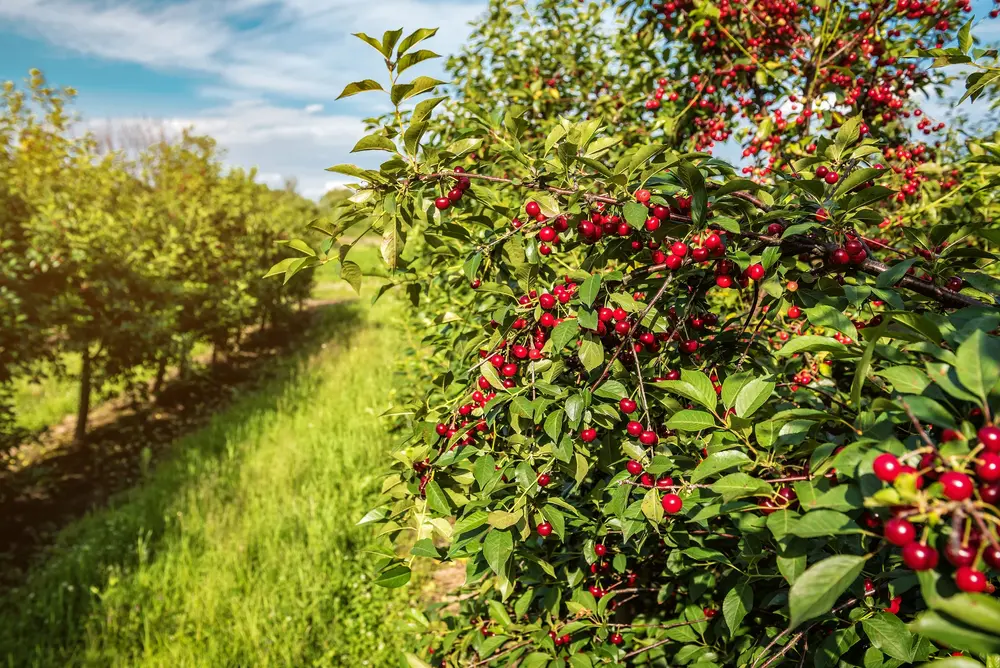
Vova Shevchuk/Shutterstock
Cherry trees are some of the most beautiful fruit trees in the springtime. They are covered with pink or white blossoms. The blossoms are fertilized and grow into the delicious fruit we know today.
Cherries can either be sweet or sour. If you plan on planting a sweet cherry tree, you will have to plant a second tree for cross-pollination.
Sour cherry trees can self-pollinate, so there is no need for a second tree if you plan to plant a sour cherry tree.
Sweet cherries grow in hardiness zones 5 to 7, while sour cherries grow in zones 4 to 6. You will have to wait about four years before your cherry tree will produce fruit. Once it does start producing, you should get 30 to 50 quarts of cherries each year.
8. Plum
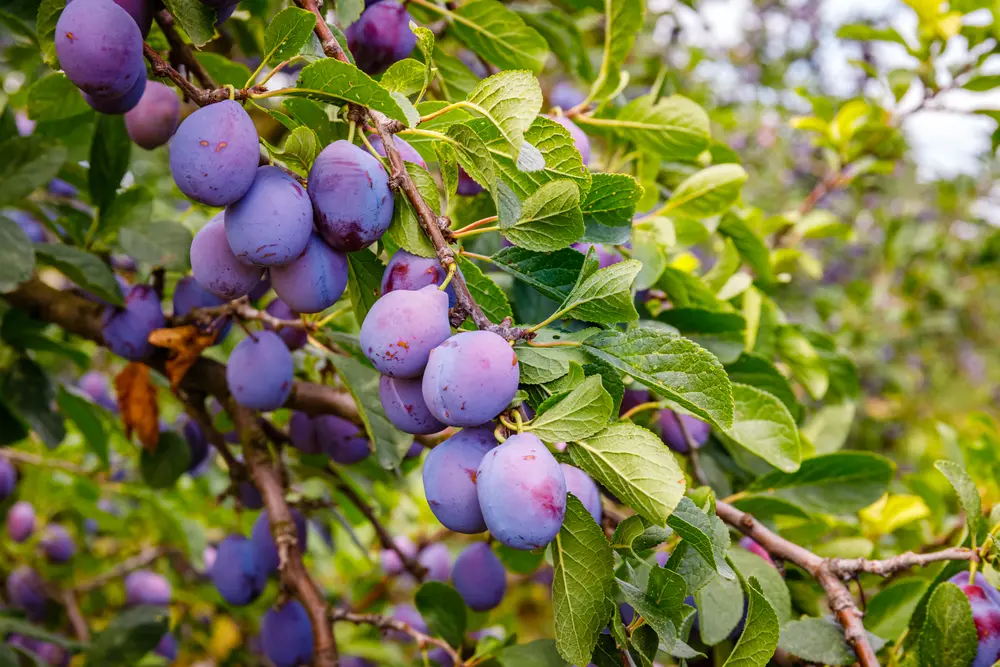
Nnattilli/Shutterstock
The climate you live in will determine the type of plum tree that best suits you. If you live in a cold climate, an American hybrid plum variety is hardy enough to withstand the harsh winter temperatures. They are found in hardiness zone 3.
If your winters don’t get too cold, you can get either an American hybrid or a European plum variety. The European plum variety is hardy enough to withstand most cold climates in the United States but isn’t quite as hardy as the American hybrid.
If you are in a climate with very mild winters, you could opt for a Japanese plum variety. They are similar to peaches and thrive in warmer climates.
9. Persimmon
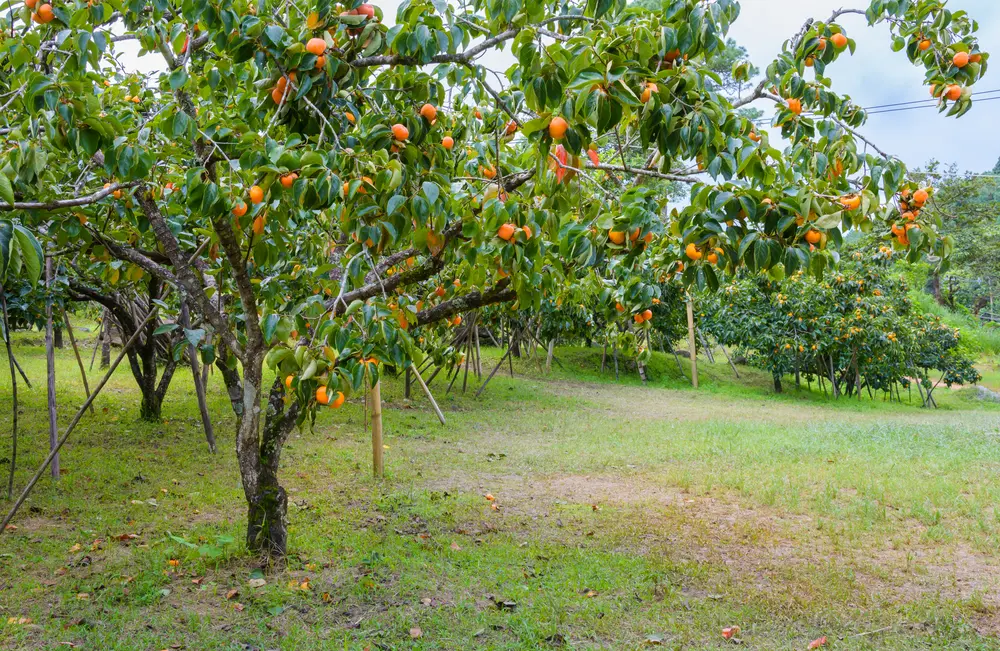
Torjrtrx/Shutterstock
Persimmon trees are found in the United States, from Florida to Connecticut. They grow in hardiness zones 4 through 9. The American persimmon can withstand temperatures down to -25 degrees Fahrenheit.
The Asian persimmon can tolerate temperatures down to 0 degrees Fahrenheit. The American persimmon variety has to have both a male and female tree for cross-pollination.
The Asian persimmon variety is self-pollinating, making it a better option for a smaller garden because you only have to plant one tree.
Persimmons prefer a soil pH between 6.5 and 7.5. They need to be planted in a deep hole because they have a deep taproot.
10. Grapefruit
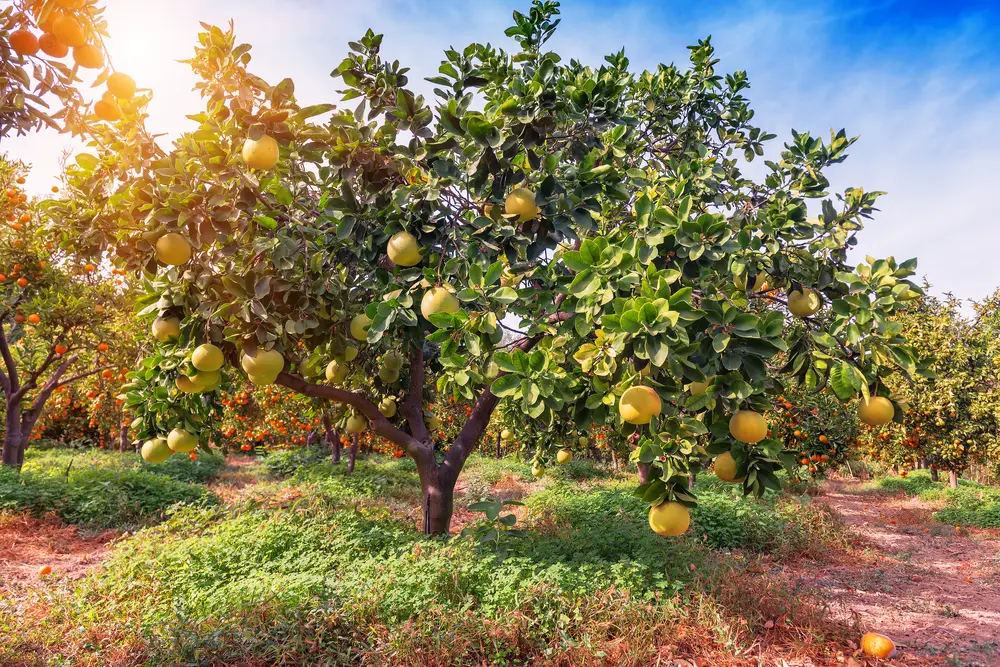
Vova Shevchuk/Shutterstock
Grapefruits are some of the most unliked citrus fruits. They have a bitter tinge to their tart flavor that most people don’t care for. When they are prepared correctly, grapefruits are delightful!
In addition to their bitter flavor, growing a grapefruit tree isn’t the easiest thing to do. Mature ruby-red grapefruit trees reach up to 20 feet in height and 10 feet in width. They thrive in hardiness zones 9 to 11, needing a warmer climate to produce.
They should be planted in the spring or fall, depending on your zone. Plant grapefruit trees in well-drained soil that gets a lot of sunshine. They need at least six to eight hours of sun per day.
Dig a large hole that will accommodate a large root structure. After filling in the hole with dirt, spread a layer of mulch around the base of the tree to retain moisture around the roots.
Things to Consider
When you are trying to pick a fruit tree to plant, consider the following guidelines:
- Will the tree thrive in your hardiness zone?
- Do you have enough sunlight in the spot where you want to plant it?
- Does the soil drain well?
- Does the tree need a companion for cross-pollination?
- Am I prepared to care for this tree?
Consider all of these points and pick the fruit tree that best suits your situation!
Frequently Asked Questions
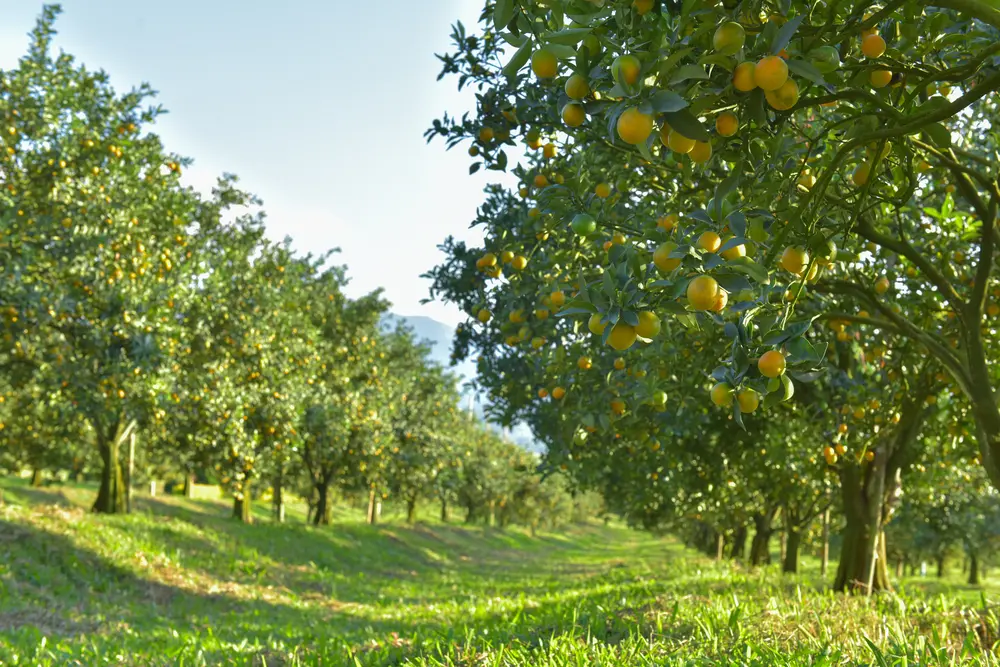
Sanit Fuangnakhon/Shutterstock
Here are answers to some of the most frequently asked questions about fruit trees.
What makes fruit trees grow faster?
Plenty of water and fertilization.
How many fruit trees make fruit?
Most trees take two trees, but some trees can self-pollinate.
What are the sources of trees?
The seed is the source of a tree.
What is the most common fruit tree?
Apple trees, cherry trees, plum trees, and pear trees are the most common trees for gardeners.
What are fruit-bearing trees called?
As the name suggests, a fruit-bearing tree is called a fruit tree.
So, What Are the Most Popular Types of Fruit Trees?
So, what are the ten main types of fruit trees?
As we’ve covered above, apple, pear, peach, lemon, fig, orange, cherry, plum, persimmon, and grapefruit trees are the most popular for gardeners in 2024.

